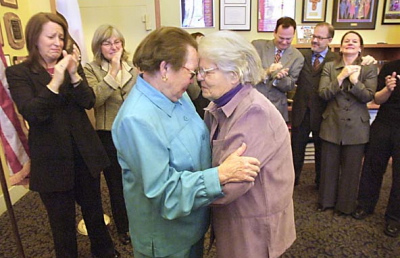Resistance is NOT Futile. Please Register and Vote.
[No one visits Coilhouse to read some blowhard’s soapbox rant, so I’ll keep it as brief as possible. The following missive is addressed specifically to our young, able-bodied, opinionated American friends of voting age who still aren’t 100% sure they’ll make it to the polls on November 4th. If that description doesn’t directly apply to you, please don’t waste your time reading any further. You might want to watch this charming video of a frolicsome chihuahua instead. Thanks!]

An Open Letter to the Basilica of Latter Day Apathetics (American Branch)
We’re in deep doo doo, loves. Up to our necks like the polar bears and the Dow. Every time one of you says “why bother voting when the system is so corrupt” or “all of the candidates are disingenuous scumbags, anyway” or “the whole thing’s rigged” or “what difference does it make”, we all sink a little deeper into the muck. Not okay. While I may share your doubts and your lack of trust, your personal defeatism mustn’t drag us any further down than we’ve already gone.
I do know a tiny handful of conscientious, some might say radical objectors who refuse to take part in U.S. elections because they want to see the system fail. While I don’t share that desire, I can at least respect their strong convictions. But let’s face it. Anarchic leanings are not generally the reason why folks in our demographic don’t cast a ballot. Far more commonly, people (especially young, moderate-to-liberal-leaning people) fail to vote because they can’t be bothered. The true obstacle preventing them from registering, reading up on the propositions, researching the various platforms and making the Herculian effort of slinging their asses over to the polls is plain old, limp-wristed lethargy.

Perhaps it’s naive, but I remain convinced that the inertia anchoring millions of otherwise rational and compassionate Americans to their armchairs on election day is one of the biggest reasons why our “democracy” needs air-quotes in the first place. Please, if you haven’t yet registered to vote, put aside your premature world-weariness for five minutes and GET ‘ER DONE. There’s still time, but it’s running out. In many states, the deadline is October 4th. That’s tomorrow.
I’m far from confident or enthusiastic about the way our country runs its elections, and this soapbox is an awkward perch for me. But I know one thing for certain, my young, able-bodied, non-voting American friend, and I really hope you will believe me:
Cynicism will not protect you from disappointment. It will not shield your loved ones from harm or neglect. It will never heal your community, fix the ailing economy, or return any semblance of dignity to this country.
Your indifference is not a safety blanket; it is a shroud.
Your vote is your voice. Say something.


















